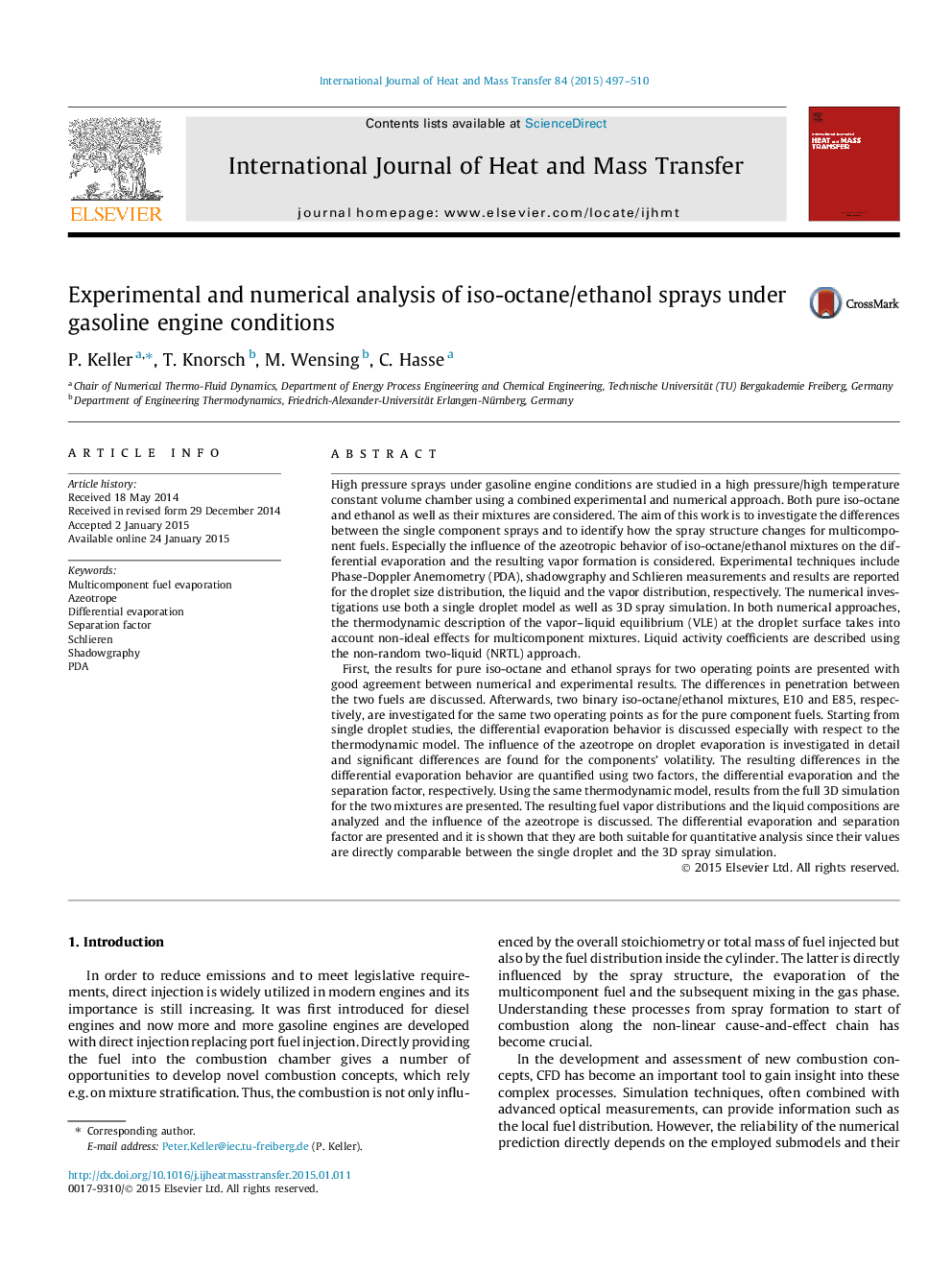| Article ID | Journal | Published Year | Pages | File Type |
|---|---|---|---|---|
| 656942 | International Journal of Heat and Mass Transfer | 2015 | 14 Pages |
Abstract
First, the results for pure iso-octane and ethanol sprays for two operating points are presented with good agreement between numerical and experimental results. The differences in penetration between the two fuels are discussed. Afterwards, two binary iso-octane/ethanol mixtures, E10 and E85, respectively, are investigated for the same two operating points as for the pure component fuels. Starting from single droplet studies, the differential evaporation behavior is discussed especially with respect to the thermodynamic model. The influence of the azeotrope on droplet evaporation is investigated in detail and significant differences are found for the components' volatility. The resulting differences in the differential evaporation behavior are quantified using two factors, the differential evaporation and the separation factor, respectively. Using the same thermodynamic model, results from the full 3D simulation for the two mixtures are presented. The resulting fuel vapor distributions and the liquid compositions are analyzed and the influence of the azeotrope is discussed. The differential evaporation and separation factor are presented and it is shown that they are both suitable for quantitative analysis since their values are directly comparable between the single droplet and the 3D spray simulation.
Related Topics
Physical Sciences and Engineering
Chemical Engineering
Fluid Flow and Transfer Processes
Authors
P. Keller, T. Knorsch, M. Wensing, C. Hasse,
